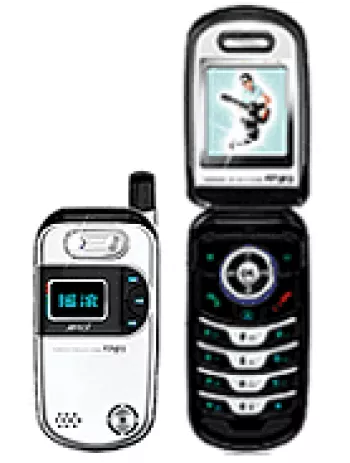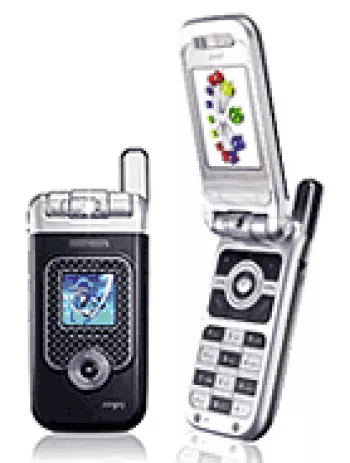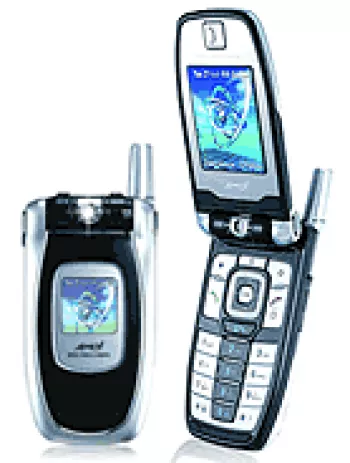
Network Capabilities
The Amoi A90B was designed to operate primarily on GSM technology. Catering to early mobile phone users, it offered basic networking functionalities. It supported 2G bands specifically on GSM 900 / 1800 / 1900 frequencies. This ensured a wide coverage for users in regions where these bands were supported. While the phone was capable of supporting GPRS, it did not offer EDGE connectivity, limiting the speed and type of data transmission available to the user.
Launch History
Introduced to the market in 2003, the Amoi A90B was representative of the feature phone era, a time preceding the wide-scale adoption of smartphones. Unfortunately, it is now discontinued, having been replaced by more advanced technology over the years. However, at its inception, it provided a practical solution for users seeking affordable and reliable mobile communication.
Body and Design
The Amoi A90B embodied the compact design typical of its time. It measured 86 x 44 x 20 mm and had a lightweight build of just 80 grams, making it highly portable and convenient for single-handed use. The phone utilized a Mini-SIM card, which was standard during its release. Its petite design made it attractive to users looking for a sleek and portable device.
Display
Despite technological limitations of its era, the Amoi A90B featured a CSTN display with a capacity of 65K colors. The screen's resolution stood at 128 x 128 pixels with a 1:1 aspect ratio. Although small by today's standards, the screen was sufficiently functional for displaying text messages and menu navigation, crucial for tasks the phone was designed for.
Memory and Storage
Memory was one of the constraining aspects of the Amoi A90B. It did not offer support for external storage with a card slot. However, it featured a phonebook that could store up to 500 contacts, which was generous for its time. In terms of call records, it maintained a list of the last 10 dialed, 10 received, and 10 missed calls, aiding users in keeping track of their recent communication activities.
No Camera Functionality
A distinct limitation of the Amoi A90B was the absence of a camera. At a time when integrated cameras were just starting to become a desirable feature, this omission positioned the A90B as a basic phone primarily for communication, excluding multimedia functionality that later became a standard in mobile phones.
Sound Features
Sound was a simple affair for the Amoi A90B. It lacked a loudspeaker but supported vibration alerts and polyphonic ringtones, a common feature at that time. Polyphonic ringtones added an extra layer of customization and personalization for the user. The device did not support a 3.5mm jack, further emphasizing its simplicity in design and functionality, limiting audio connectivity and personalization.
Communication and Connectivity
When it came to communications, the Amoi A90B was limited to SMS for messaging. While GPRS was available for data, the absence of more advanced connectivity options such as Bluetooth and WLAN made the phone fairly insular, focusing on basic text communication. It featured a WAP browser, though its functionality was limited. Lacking support for radio and USB connectivity, the phone did not facilitate additional multimedia or connectivity options.
Entertainment and Features
Entertainment on the Amoi A90B was basic, true to its era's feature phone stature. It hosted five pre-loaded games with an option for more downloadable ones. However, it did not support Java, limiting the potential for third-party applications. Simple games were one of the few entertainment features, highlighting its primary role as a communication device.
Battery Life
The Amoi A90B was powered by a removable Li-Ion 860 mAh battery. This provided a stand-by time of up to 100 hours and a talk time of up to 3 hours. While limited in comparison to modern devices, this battery life was reasonable, ensuring day-to-day usability without the frequent need for recharging, fitting well with its simpler functionality demands.
Overall Evaluation
In essence, the Amoi A90B was crafted as a rudimentary communication tool, exemplifying early 2000s design and capability trends. Its limited feature set, ranging from a small screen and basic memory to the absence of a camera and advanced connectivity options, positioned it as a practical device for basic mobile communication. As technology progressed, the demand for more sophisticated functionalities meant the A90B, like many of its contemporaries, became a relic of mobile communications, serving as a reminder of the technological evolution that has shaped today’s smartphone landscape.
Key Features of Amoi A90B
- Compact Design: With dimensions of 86 x 44 x 20 mm, it's easy to carry.
- Lightweight: Weighs only 80 g, making it portable and easy to handle.
- CSTN Display: 65K colors with a resolution of 128 x 128 pixels.
- Basic Connectivity: Supports 2G GSM network bands (900/1800/1900).
- Efficient Phonebook: Capable of storing up to 500 contacts.
- Basic Call Log: Records 10 dialed, 10 received, and 10 missed calls.
- Polyphonic Ringtones: Offers 40 different polyphonic ringtones.
- Removable Battery: Equipped with a removable Li-Ion 860 mAh battery.
- Battery Life: Stand-by time of up to 100 hours and talk time of up to 3 hours.
- Games: Comes with 5 games and supports additional downloadable games.
- Messaging Capabilities: Supports SMS and includes a WAP browser.
Amoi A90B Key Disadvantages
- No EDGE support for faster internet speeds.
- Lacks a camera, which is a basic feature in many phones.
- No loudspeaker, which limits hands-free usage.
- No 3.5mm headphone jack for easy audio connections.
- No Bluetooth or WLAN for wireless connectivity options.
- No positioning features for GPS or location tracking.
- No FM Radio support for entertainment on the go.
- Limited memory with no card slot for expansion.
- Only supports SMS for messaging, no advanced messaging apps.
- No Java support, limiting app capabilities.
- Short battery life with a talk time of up to 3 hours only.

View Also
More Phones
All Rights Reserved +13676 Phones © Mobilawy 2025
























